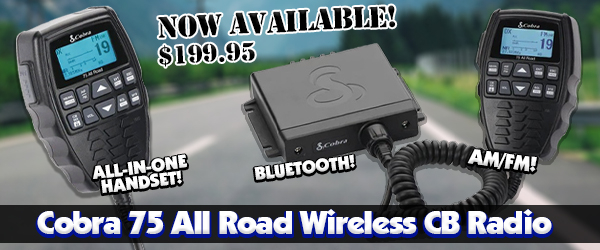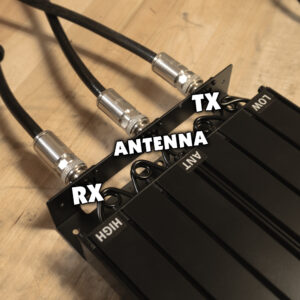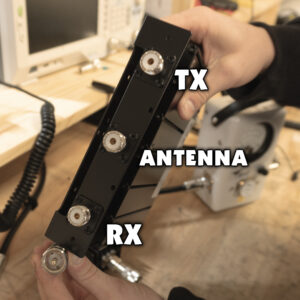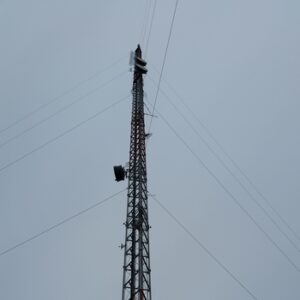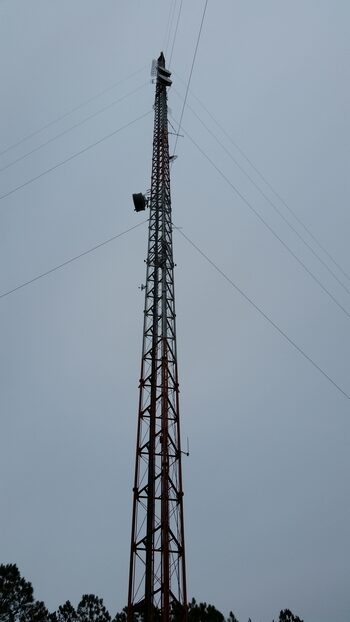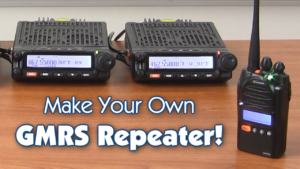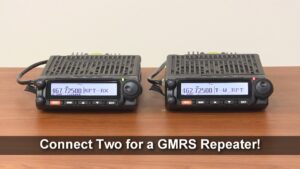 As GMRS radios continue to grow in popularity, so does interest in expanding the range of the service for even greater coverage. The way to do this is through the use of repeaters.
As GMRS radios continue to grow in popularity, so does interest in expanding the range of the service for even greater coverage. The way to do this is through the use of repeaters.
Unfortunately, setting up a repeater can be time consuming, resource intensive and very expensive for many GMRS operators. To complicate matters further, there are not many repeaters out there that are specifically FCC approved for the GMRS.
Now, Midland is stepping up to the plate with a repeater of its own, and it may be a practical solution for all of those issues. It's the MXR10 Portable GMRS Repeater, a 10 watt repeater that can be set up in a home, a vehicle or just about any other clean and dry indoor location where such a radio range extender is needed.
The MXR10 is specifically tailored for repeater capable GMRS radios in three unique ways. First, it's a portable repeater, designed for use in a mobile or onsite environment where maneuverability is desired or needed. For instance, the MXT10 is ideal when setting up a base camp during a group hiking trip or other excursion in the wild. It is handy for extending communications during an offroading event. It can be used at in club activities and conventions. It's also great for use as a temporary range extender or backup repeater in case of a communications outage or other emergency. There are many practical applications for a mobile or portable repeater, and the MXR10 is made to fit those needs.
The MXR10 is also plug and play. It can be set up and taken down very quickly, with little effort and preparation. This is primarily due to the fact that the General Mobile Radio Service itself only has 8 sets of repeater frequencies, and these are generally pre-assigned to eight repeater channels. The MXR10 is pre-programmed with two sets of these eight channels, one in narrow band mode and a second set in wide band mode, for a total of 16 channels.
The channels can be easily customized further using PC programming software provided by Midland. This customization includes High and low transmit power selection, squelch level adjustment, repeater delay, and the selection of CTCSS tones and DCS codes. The Tones and codes can be programmed to transmit and receive independently, This feature is also known as split tones. Also, the programming software, if needed, is easy to setup up and use, and customizing the MXR10 repeater is fairly simple and straightforward. This alone makes the MXR10 a valuable asset in the field.
Most importantly, it's affordable. A traditional repeater alone can cost anywhere from $1800 on up. By the time you add the duplexer, antenna, cabling, power requirements and other expenses, the overall cost can be considerably higher. In contrast, the Midland MXR10 is only $459.99. Even factoring in the antenna, feed line, etc., the MXR10 is still a fraction of the cost of a full-fledged rack unit, and considerably less than the cost of a "home grown" GMRS repeater system.
But what about the wattage? A typical GMRS repeater is around 50 watts, the maximum allowed on the GMRS. The MXR10 is only 10 watts. Doesn't that make the MXR10 inferior?
Not at all.
While 50 watts is a significant power output compared to 10 watts, wattage alone does not determine the coverage or performance of a repeater. Location, elevation, antenna height, the feed line and reliable uptime all factor into the equation. Under the right circumstances, a 10 watt mobile repeater can conceivably match the performance of a 50 watt model. In fact, it can be an asset, as the lower wattage equates to a lower draw on power, which can potentially increase uptime, particularly when the power source may be limited or becomes compromised. Also, it's designed for mobility. The portability factor alone gives the MXR10 an advantage that the typical repeater station doesn't have. This can be especially useful in an emergency situation.
The MXR10 is compatible with all Midland GMRS two way radios with repeater capability. This includes the MXT Series mobile radios and the Midland GXT3000VP4 portable handheld GMRS radio. It will also work with any other repeater capable GMRS radio.
The Midland MXR10 includes the repeater, AC adapter, DC adapter, programming cable, owner’s manual, quick start guide, and a one year manufacturer warranty from Midland. All you need is an external antenna and a feed line (cable) to connect it to the unit.



